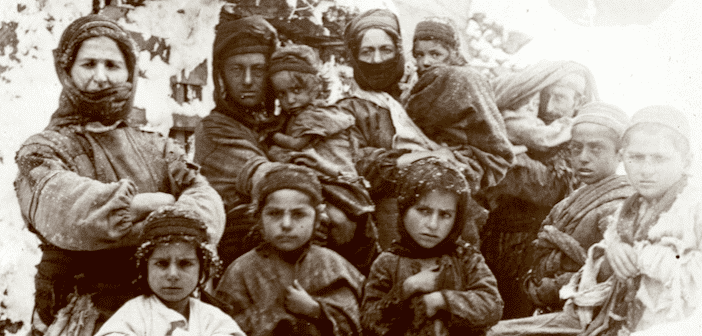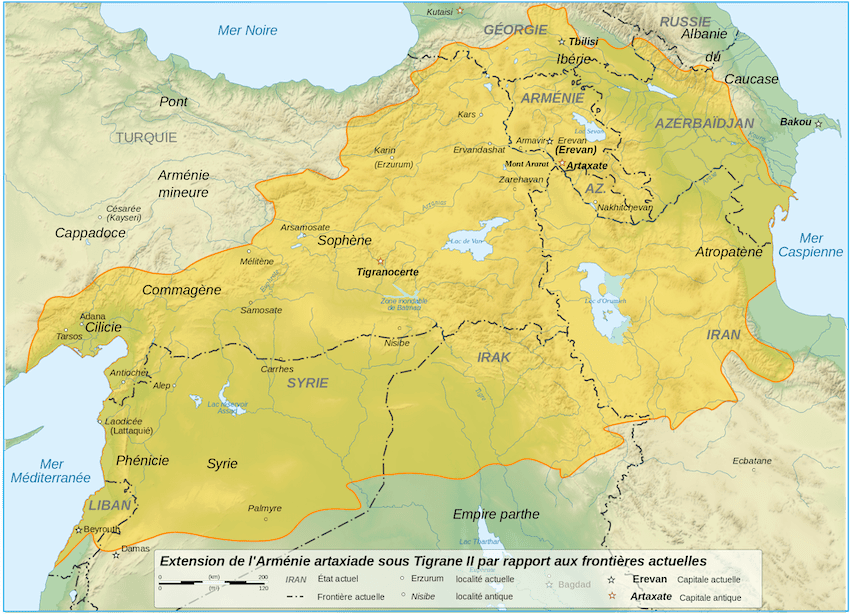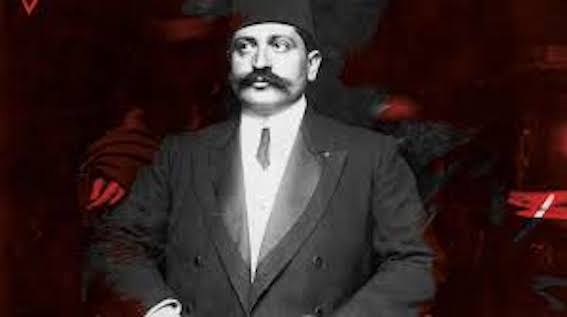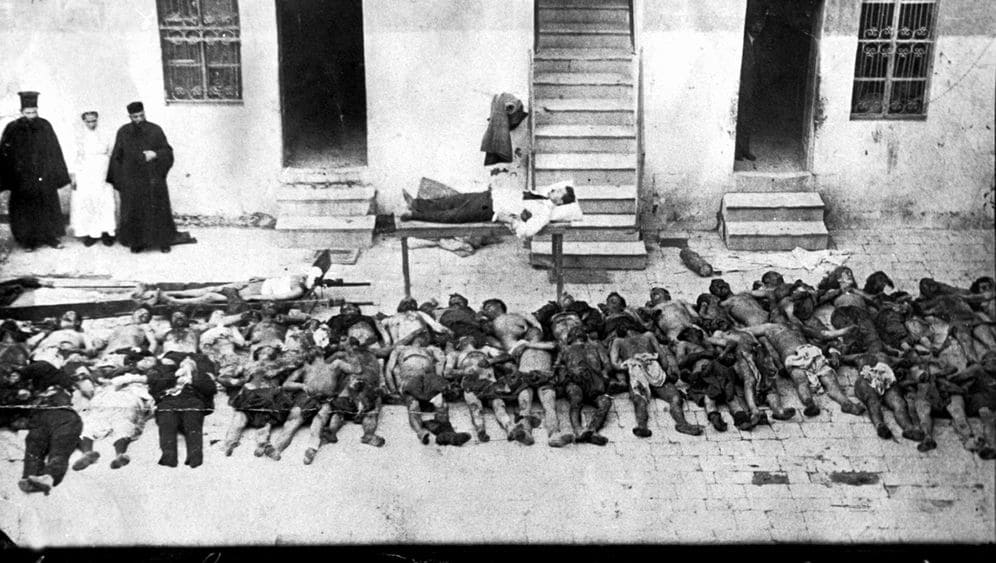Many years ago, a group of Armenian students came to me to ask me to give a public lecture at the university in remembrance of April 24.
My first reaction was: “Are you sure it’s me you want?”. They said yes. I told them: “Frankly, I feel uncomfortable. Although I have a lot of sympathy for the Armenian people, I am in no way an expert on the Genocide. What original insight can I possibly offer you?”.
I also told them that a couple of years before I happened to attend a lecture by Dr. Richard Hovanessian, of UCLA, perhaps the foremost authority on the Genocide, during one of his visits to Lebanon. The lecture was superlative. Scholarly and elegant. Two hours passed that we felt like ten minutes. “The comparison with Dr. Hovanessian, I told them, not only intimidates me; it makes me look ridiculous”.
The Armenian group wisely calmed my worries. “We just want you to give an objective account”, they said. Realizing that there was no way out of it, I resigned myself to accept. The next day, I started to investigate the matter.
And here it is. A candid account. It was buried in my papers for years. I thought it may not be a bad idea to unearth it. I have made a few minor changes, while retaining the original spoken style of the lecture. It is mainly targeted at a non-Armenian audience. The Armenians know the story too well. It is the wider public that needs to be informed.
April 24
On the night of April 23-24, 1915, the Turkish government arrested hundreds of Armenian community leaders in Constantinople, the capital city of the Ottoman Empire. They were sent to a prison in the interior of Anatolia (Asian Turkey) and put to death.
The persons seized that night included the most prominent members of the Armenian community: political and religious leaders, intellectuals, and professionals.
On the same day, 5000 of the poorest Armenians were butchered in the streets of Constantinople and in their homes.
April 24 is annually commemorated as the date of the unfolding of the Armenian genocide.
The Meaning of Genocide
Genocide is the deliberate and organized killing of a people. Because of its scope, genocide requires central planning and a machinery to implement it. Only governments have the resources to carry out a mass murder on this scale.
The word “genocide” is made from the Greek “genos”, which means race, and the Latin “cide”, which means killing. It was coined in 1944 by Raphael Lemkin, an American jurist of Polish-Jewish descent. He was describing the criminal practices of Nazi Germany throughout occupied Europe, mainly against the Jews. But he also referred to the massacre of the Armenians by the Turks.
Throughout history, civilian populations have often been subjected to the brutality of invading armies. When a group conquered another, it was common practice to kill all the men—civilians and soldiers alike—of the conquered group. The names of Attila the Hun and Genghis Khan come readily to mind.
In the Armenian case, however, a segment of the population was systematically decimated by its own government. Like thieves in the night, the Turks perpetrated their crime under the cover of a world war.
The Armenians in History
The Armenians are an ancient people. They trace their origin back three thousand years.
Armenia was conquered many times in its long and complicated history. Medes, Persians, Greeks, Romans, Byzantines, Arabs, Seljuk Turks, Mongols, Mamelukes, Ottoman Turks and Russians succeeded one another.
Sometimes Armenia was subjected to direct foreign rule.
Sometimes it maintained a degree of autonomy under native princes who paid tribute to foreign powers.
Sometimes it managed to become independent under its own national dynasties. Thus, King Dikran II, in the early first century BC, built an independent Armenian empire that stretched from the Caspian Sea to the Mediterranean, and included parts of Georgia and Syria. That was the most extensive Armenian realm in history. Southern Syria, Lebanon and Palestine were for some time vassal states controlled by Armenia.
Dikran II was defeated by the Romans in 69 BC. As a result, Armenia became part of the Roman Empire.
In the year 303 AD, Armenia became the first nation to adopt Christianity as its state religion—20 years before Roman emperor Constantine made Christianity the official religion of the Roman Empire.
By 1514, the Ottoman Empire had gained control of Western Armenia. Eastern Armenia, on the other hand, was under Persian rule until 1824 when it was annexed by Russia.
Like other non-Muslim minorities in the Ottoman state, the Armenians were treated as “dhimmis”. This meant second class status, the payment of extra taxes, the inadmissibility of legal testimony, and the prohibition on bearing arms. The so-called millet system gave non-Muslims communal autonomy as religious minorities, while depriving them of all forms of political participation. Despite these restrictions, Armenians lived in relative peace.
By the 19th. century, the Ottoman Empire was in serious decline. This was accompanied by cultural and political revival among many of the subject peoples. National liberation struggles, supported at times by one or another of the European powers, resulted in the Turkish loss of Greece and most of the Balkan provinces.
Of the various subject peoples, the Armenians were perhaps the least militant. Unlike the Balkan Christians or the Arabs, they were dispersed throughout the Empire. For this reason, most Armenian leaders did not think in terms of independence.
Political groups had formed among the Armenians and began to agitate for greater levels of autonomy, at times resorting to violence. One party, the Armenian Revolutionary Federation, commonly called Dashnak (or Tashnag, in western Armenian) sought autonomy for Armenians within the Ottoman and Russian empires. The Hunchak party called for an independent socialist Armenia.
The Ottoman and Russian governments responded to the demands of Armenian nationalists with repression. Between 1894 and 1896, 200.000 Armenians were killed by the Ottomans under Sultan Abdul Hamid II. This early wave of killing is called “the massacres”, or the “Hamidian massacres”, to distinguish it from the greater atrocities that were yet to come. The Russian government, although not as repressive as the Ottoman government, closed Armenian schools and confiscated church property.
Genocide
The Genocide proper occurred during World War One. It was decided by the political party in power at the time in the Ottoman Empire. That was the Committee of Union and Progress, popularly known as the Young Turks. They were a xenophobic nationalist group. They wanted a new homogenous Turkish state in place of the decaying multinational Ottoman Empire. Their ideology, called Pan-Turanism or Turkism, advocated a state whose population would be exclusively Turkic. This justified in their eyes the liquidation of the Armenians of the Ottoman Empire.
Three figures dominated the Young Turks: Mehmed Talaat, Minister of Interior in 1915 and Prime Minister in 1917; Ismail Enver, Minister of War; and Ahmed Jemal, Minister of the Marine and Military Governor of Syria.
For the execution of the Genocide, a secret agency was created, called the “Special Organization”. In charge of it was Bahaeddine Shakir, a medical doctor. The Special Organization created special “butcher battalions” made up of violent criminals released from prison. Ottoman officials who did not comply with the extermination program were dismissed. Ordinary Turks who protected Armenians were killed.
The Genocide proceeded in a systematic fashion, which proves that the decision to eradicate the Armenians was not a hasty decision dictated by circumstances, but the result of extensive deliberations.
First, the Armenian recruits in the Ottoman army were disarmed, placed into labor battalions, and murdered in batches.
Then came the arrests of April 24. Armenian notables and intellectuals were rounded up and killed.
Finally, the remaining Armenians were gathered together, told that they will be relocated, and then forced to march to concentration camps in the Syrian desert. These deportations represented a new method of massacre.
Adult and teenage males were usually separated from the deportation caravans and killed outright. Sometimes they were tied together and thrown into the river. Turkish guards would fire a bullet into one of them and his body would drag the rest to their deaths.
Women and children were driven for months over mountains and deserts. On the march, they were often denied food and water. Many would starve and thirst to death in the burning sun. Tens of thousands of Armenian women were raped by their Turkish guards. Many were brutalized or killed by their guards or by marauders. Hundreds of thousands fell along the routes to the desert.
The atrocities were renewed between 1920 and 1923. They were carried this time by the Turkish Nationalists who represented a new political movement opposed to the Young Turks but who shared a common ideology of ethnic exclusivity.
The final chapter of the Armenians in Anatolia was written in Smyrna (Izmir) in 1922. A fire in the Armenian neighborhood consumed the entire Christian sector of the city and drove the population to the shore where they were sailed into exile bereft of all belongings.
Denial
The German state that succeeded the Nazis has acknowledged its historical guilt for the Jewish Holocaust. However, the successive governments of Turkey—with one exception—have denied to this day that a genocide was committed.
Yet the Genocide took place in the full light of history. It was witnessed by hundreds of missionaries and diplomats stationed in the Ottoman Empire, foremost among them is Henry Morgenthau, the American ambassador. The Genocide was well-reported in the American and western media. It was denounced in Paris, London and Washington as a war crime. Even Germany and Austria, who were then the allies of Turkey, have condemned it.
The Turks themselves have confessed it in earlier times. After the war, in 1919, the government of Damat Ferid Pasha held war crimes trials and condemned to death the chief perpetrators of the Genocide. In a 1926 interview with a Swiss reporter, Mustapha Kemal said that the Young Turks “should be made to account for the lives of millions of our Christian subjects who were ruthlessly driven en masse from their homes and massacred”.
So how is it possible for Turkey to deny the Genocide?
Turkey does not deny that many Armenians were killed, but maintains—and this is the key point—that it was not a planned genocide.
The Turkish narrative runs somewhat as follows: What happened in 1915 was not genocide. There was no deliberate plan to systematically wipe out the Armenian population, as the word genocide implies. The Armenians were only removed from the “war zone”. They had to be relocated from the eastern war front where they were helping the Russians who promised them a homeland. Atrocities were committed, on both sides, as it happens in all wars. Armenians slaughtered us; we slaughtered them; it was civil war. Many Armenians died in ethnic fighting and deportations, and as a result of repressive measures carried out in a war context. What happened during the war was tragedy, not genocide.
In fact, Armenians were wiped out from all of Anatolia, not just from the eastern regions. It is true that many Armenians fought back to protect themselves. That does not make it a civil war.
Turkey also contests the figures, putting the death toll at 600.000, instead of 1.5 million, which is the commonly given figure. But does it really make a difference? Does it alter the basic fact that a genocidal massacre had taken place? Would a few hundred thousand less make it less of a genocide? The whole issue of victim counting is irrelevant and indecent.
Why does Turkey deny the Genocide?
Part of it is nationalistic vainglory. Another reason is fear of reparations. Turkey is afraid that if it recognizes the Genocide, then the claim for reparations will soon follow, and it will have to return to the Armenians the land and property confiscated after 1915.
Turkish denial is experienced by Armenians as a second killing. Paradoxically, it contributes to the sharpening of Armenian consciousness.
Why should we remember the Armenian Genocide?
Victims usually like to share their sorrow. They like to feel that their grief is being acknowledged.
But there is another reason why we should not forget. By ignoring the Armenian genocide, the stage was set for the Holocaust of World War II. The abandonment of the Armenians was not lost on Hitler. Before sending his troops into Poland, Hitler reportedly told them: “Go ahead, kill without mercy. After all, who remembers today the extermination of the Armenians?”
kamal.yazigi@icloud.com
*Professor of Philosophy, Political Science & International Affairs
*First published by Shaffaf on ON








As a Palestinian-Armenian, I would like to commend and thank Kamal Yazigi and “Middle East Transparent” for publishing the article (originally in “Shaffaf”) about the Armenian Genocide committed by Turkey from 1915 to 1922 where at least 1.5 million Armenian civilians were killed by the Turkish government and the rest were exiled. In the process, Armenians lost 90 percent of their homeland and their churches/schools were converted to storage depots, cafes, restaurants, stables, and brothels. Successive Turkish governments have unleased extensive campaigns to deny the undeniable. As Palestinian-Armenian, I am fully aware of the agony Palestinians have experienced for 75… Read more »